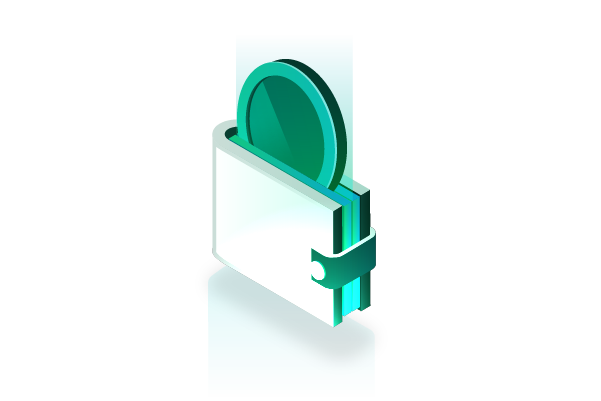Securing digital assets become more crucial with the growth of cryptocurrency and the adoption of blockchain technology.
This adoption comes with more use cases that allow not only transactions between individuals but also between corporate bodies and many parties.
Therefore, parties involved in transactions find it difficult to entrust the security and safety of their assets in the hands of a person. Thus, multiple signatures for a multi-signature account become more paramount.
A multi-sig (multi-signature) wallet in cryptocurrency is a type of digital wallet that requires multiple private keys to authorize a transaction.
This means that a predetermined number of signatures (or approvals) from different private keys are necessary to complete any transaction.
This piece explains multisig wallets, their benefits, how they work, use cases, and best practices, offering a complete guide for individuals, businesses, and developers interested in leveraging this security feature.
What is a Multisig Wallet?

A multi-sig wallet is a type of cryptocurrency wallet that requires multiple private keys to authorize a transaction.
Unlike traditional single-signature wallets, which rely on one private key for transaction approval, multisig wallets require multiple parties’ consent.
This added layer of security ensures that no single entity has unilateral control over the funds, making it a robust solution for individual and organizational use.
Multisig wallets function by creating multiple private keys distributed among the designated parties.
For instance, in a 2-of-3 multisig configuration, three private keys are generated and distributed to three different parties.
Any two of these three keys must be used to authorize and sign a transaction.
This setup means that if one key is lost or compromised, the funds remain secure because the other two keys are still needed to complete a transaction.
This multi-layered security mechanism makes it extremely difficult for unauthorized individuals to access the funds without controlling the requisite number of keys.
The security benefits of multisig wallets extend beyond preventing unauthorized access.
They also provide a safeguard against single points of failure. In single-signature wallets, the single private key’s loss or compromise means losing access to the funds.
However, with multisig wallets, losing one key does not render the wallet unusable as long as the required number of signatures can still be met with the remaining keys. This redundancy ensures the assets are more resilient against key loss or theft.
Moreover, multisig wallets are particularly useful in organizational settings where funds must be managed collaboratively.
By requiring multiple signatures, these wallets facilitate a system of checks and balances, ensuring that all parties involved have a say in the authorization of transactions.
This collective control mechanism can prevent unilateral actions by any single party, thereby reducing the risk of fraud and mismanagement.
For instance, in a business partnership or corporate environment, multisig wallets can be configured such that major financial decisions and transactions must be approved by multiple executives or board members, enhancing corporate governance and financial oversight.
Additionally, multisig wallets support a variety of configurations to suit different security needs and organizational structures. Common setups include 2-of-3, 3-of-5, and other n-of-m schemes, where ‘n’ signatures are required out of ‘m’ possible keys.
This flexibility allows users to tailor the wallet’s security model to their specific requirements, balancing security, accessibility, and convenience.
What are the Key Features and Benefits of Multisig wallets?

These particular features and benefits are why multisig wallets are sought-after among users.
Enhanced Security
The primary advantage of multisig wallets is the enhanced security they offer. By requiring multiple signatures, multisig wallets safeguard against single points of failure.
Even if one private key is compromised, an attacker still needs access to additional keys to complete a transaction. This makes multisig wallets an attractive option for users who prioritize security.
Shared Control
Multisig wallets are particularly useful when control over funds needs to be shared among multiple parties. For instance, in a business partnership, a multisig wallet can ensure that all partners must agree before any funds are spent. This shared control mechanism fosters trust and transparency, as no single party can act unilaterally.
Backup and Redundancy
Another significant benefit of multisig wallets is the built-in backup and redundancy. If one private key is lost or compromised, the funds can still be accessed using the remaining keys.
This reduces the risk of losing access to the wallet due to a single point of failure and provides a safety net for key management.
What are the Common Multisig Configurations?

Multisig wallets offer flexibility in terms of configuration, allowing users to define the number of required signatures and the total number of keys. Here are some common multisig configurations:
- 2-of-3 Multisig. In a 2-of-3 multisig wallet, three private keys are generated, and any two of these keys are required to sign a transaction. This configuration is popular among business partners or co-founders who want to ensure that at least two parties must agree on any transaction.
- 3-of-5 Multisig. A 3-of-5 multisig wallet requires three out of five private keys to authorize a transaction. Larger organizations or groups often use this setup where a higher degree of consensus is desired before any funds are moved.
- 2-of-2 Multisig. In a 2-of-2 multisig wallet, both private keys must sign off on a transaction. This configuration is ideal for joint accounts or partnerships where parties must agree on every transaction.
How Do Multisig Wallets Work?
Understanding the mechanics of multisig wallets is crucial for their effective use. Here is a step-by-step overview of how multisig wallets work using Gnosis SAFE:
Creation and Setup

Creating a multisig wallet begins with defining the number of required signatures and the number of keys. This process typically involves generating multiple private keys on Gnosis SAFE.
Here is a screenshot of the process
- Access the Gnosis Safe platform here. https://safe.global/
- Click on lunch wallet
- Creating a New Safe
After clicking the launch wallet, you will be directed to the welcome screen. From here, select the “Create new Account” button.
- After the step, you are required to choose your preferred network. For this guide, let’s go with Ethereum.
- Connect your wallet
- Choose a name for your safe to identify it easily.
- Designating Owners and Setting Confirmation Requirements. These steps include determining the number of wallet addresses and number of confirmations. At least, it should be above one for added security.
- Finalizing and Deploying Your Safe. After all these steps, review and deploy
- Proceed with the creation of your multisig wallets using metamask or similar exchanges
- After the step, wait patiently for the smart contract to deploy the safe.
- Your safe is ready to use to store your digital assets.
What are the other steps involved in using multisig wallets?
Key Distribution
Once the keys are generated, they must be securely distributed among the parties involved. Each key holder should store their private key securely, such as a hardware wallet or an encrypted digital storage solution. It is essential to ensure that keys are not stored together or in easily accessible locations to maintain the security benefits of multisig wallets.
Transaction Authorization
When a transaction is initiated, it is first created and signed by one of the private key holders. The partially signed transaction is then shared with the other key holders, who add their signatures. The process continues until the required number of signatures is obtained. For example, in a 2-of-3 multisig wallet, two key holders must sign the transaction.
Broadcasting the Transaction
Once the necessary signatures are collected, the fully signed transaction is broadcast to the blockchain network. The network verifies the signatures and processes the transaction like any other blockchain transaction. The funds are then transferred according to the transaction details.
What are the common use cases for Multisig Wallets?
Multisig wallets are versatile tools that can be applied in various scenarios to enhance security and control. Here are some prominent use cases:
Corporate Treasury Management
For businesses, managing corporate funds securely is of utmost importance. Multisig wallets offer a solution by requiring multiple executives to approve transactions. This ensures that no single employee can unilaterally move company funds, reducing the risk of internal fraud and enhancing financial oversight.
Escrow Services
In escrow services, a trusted third party holds funds for two parties involved in a transaction until certain conditions are met. Multisig wallets can facilitate this process by requiring signatures from all parties involved, including the escrow agent, before releasing the funds. This adds an extra layer of security and trust to the transaction.
Decentralized Governance
Decentralized organizations, such as decentralized autonomous organizations (DAOs), often rely on multisig wallets to enforce collective decision-making. By requiring multiple signatures from elected representatives or community members, multisig wallets ensure that funds are only spent with broad consensus, aligning with the principles of decentralization and transparency.
What are the Common Advantages and Disadvantages of Multisig Wallet?
While multisig wallets offer numerous benefits, they also come with certain drawbacks. The Advantages include
Advantages
- Increased Security. Multisig wallets significantly enhance security by requiring multiple signatures for transactions. This reduces the risk of unauthorized access and theft, providing peace of mind to users.
- Prevention of Single Point of Failure. With multisig wallets, the loss or compromise of one private key does not result in the loss of funds. The redundancy built into multisig wallets ensures that funds can still be accessed using the remaining keys.
- Collaborative Control. Multisig wallets facilitate shared control over funds, making them ideal for partnerships, organizations, and groups. This collaborative approach ensures that all parties have a say in financial decisions, promoting transparency and accountability.
Disadvantages
- Complexity. Setting up and managing a multisig wallet can be more complex than a single-signature wallet. Users must generate, distribute, and securely store multiple private keys, requiring more technical knowledge and diligence.
- Coordination Challenges. All key holders must coordinate to authorize transactions, which can slow down the process. This can be a drawback in situations where quick access to funds is necessary.
- Risk of Deadlock. Accessing the funds can become challenging if key holders become unavailable or uncooperative. For example, in a 2-of-3 multisig wallet, the funds may become inaccessible if two key holders lose their keys or refuse to cooperate.
What are the Differences Between Multisig and Single Signature Wallets?
Security
- Single Signature Wallets: Rely on one private key for transaction authorization. If this key is lost or compromised, the funds are at risk.
- Multisig Wallets: Require multiple private keys to authorize transactions. This added layer of security reduces the risk of unauthorized access and provides redundancy.
Control and Decision-Making
- Single Signature Wallets: Control is centralized with one individual. This means quicker decision-making but higher risk if the key is compromised.
- Multisig Wallets: Control is decentralized among multiple parties. This setup ensures that no single party has unilateral control over the funds, promoting shared decision-making and reducing risk.
Risk of Single Point of Failure
- Single Signature Wallets: Vulnerable to a single point of failure. If the private key is lost, the funds become inaccessible.
- Multisig Wallets: Mitigate the risk of a single point of failure. The remaining keys can still authorize transactions even if one key is lost.
Complexity
- Single Signature Wallets: Simple to set up and use, ideal for beginners and individual users.
- Multisig Wallets: More complex to set up and manage, requiring a higher level of technical knowledge and coordination among key holders.
Transaction Speed
- Single Signature Wallets: Transactions are quickly authorized since only one signature is needed.
- Multisig Wallets: Transactions take longer to authorize because multiple parties must sign off, ensuring security and consensus.
Use Case Suitability
- Single Signature Wallets: Best for personal use, small transactions, and situations where quick access to funds is necessary.
- Multisig Wallets: Ideal for businesses, partnerships, and decentralized organizations where security and shared control are priorities.
Are there Real-World Examples of Multisig Wallets?
BitGo
BitGo, a digital asset security company, uses multisig technology to provide secure custody solutions for institutional investors. Bitgo leverages multisig wallets to ensure that multiple approvals are required for large transactions, reducing the risk of internal and external threats.
Blockchain Capital
Blockchain Capital, a venture capital firm specializing in blockchain technology, utilizes multisig wallets to manage its investment funds. The firm’s partners hold separate keys, ensuring that significant financial decisions are made collectively and securely.
Best Practices
To maximize the benefits of multisig wallets, following best practices for their setup and maintenance is essential. Here are some recommendations:
Security Tips
- Use Reputable Software: Choose reputable wallet providers and software that support multisig functionality. Verify the software’s security features and reviews before use.
- Secure Key Storage: Store private keys in secure locations, such as hardware wallets or encrypted digital storage. Avoid storing keys in easily accessible or vulnerable places.
- Regular Backups: Back up all private keys and store the backups in separate, secure locations. This ensures that keys can be recovered in case of loss or compromise.
Coordination and Communication
- Clear Communication: Establish communication channels among key holders to facilitate smooth transaction authorization. Use secure communication methods to discuss and approve transactions.
- Defined Roles and Responsibilities: Clearly define the roles and responsibilities of each key holder. Ensure that all parties understand their obligations and the importance of timely cooperation.
Conclusion
Multisig wallets are a powerful tool in cryptocurrency and blockchain, which offer enhanced security, shared control, and redundancy. By requiring multiple signatures for transactions, multisig wallets mitigate the risks associated with single points of failure and unauthorized access to digital assets.

Yusuf Na'im Olatunde
I am a writer who has dedicated my career to exploring, explaining, and humanizing the fast-evolving world of Web3, blockchain technology, and NFTs. I entered the blockchain space driven by a deep curiosity—curiosity about how decentralized systems could shift power, reshape digital ownership, and create entirely new economic models for creators, builders, and communities. Over time, that curiosity grew into a passion, and eventually into the professional path I walk today.
As a Web3 writer, my mission is simple: to translate complexity into clarity. Blockchain can be intimidating for newcomers, yet I believe it shouldn’t be. Whether I’m breaking down the mechanics of smart contracts, reviewing emerging NFT projects, analyzing Layer-1 and Layer-2 ecosystems, or exploring new decentralized identity solutions, I aim to make every piece of content accessible, accurate, and engaging. I want my readers to walk away not just informed, but empowered to participate in the digital future.
- Yusuf Na'im Olatunde#molongui-disabled-link
- Yusuf Na'im Olatunde#molongui-disabled-link
- Yusuf Na'im Olatunde#molongui-disabled-link
- Yusuf Na'im Olatunde#molongui-disabled-link

